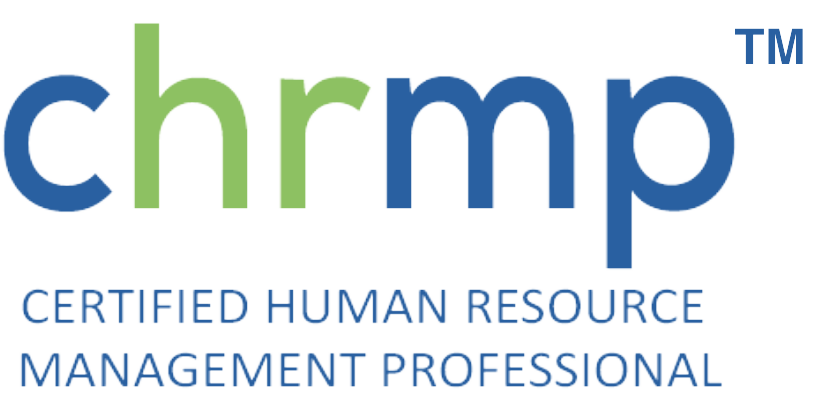“Correct English usage for effective technical writing” is of paramount importance, as it helps in increasing the clarity of report.
Science of Technical Writing
Before we proceed ahead, let us see what George Gohen and Judith Swan had to say on “ Science of Scientific Writing”. It is given below.
- The fundamental purpose of scientific discovery is not the mere presentation of information and thought.
- Rather, it is actual communication.
- The most important aspect as per them is that reading audience should be able to perceive it correctly.
We should always keep in mind this simple purpose of effective technical writing .
Poorly written paragraphs, poor sentences, along with use of wrong words, may spell doom on the report. It may destroy the very purpose of a technical report of conveying clear cut information to the reader.
We are aware that words and grammar constitute language. The aspects of language, which are important as effective technical writing are
- Syntax
- Punctuation
- Diction
- Paragraph Development
- Active-Passive Voice
- Tense
Let us discuss, now, how we have to take care of all these aspects in effective technical writing.
1. Syntax
Syntax is a form of grammar. We may define it as the format consisting of arrangement of words to create a sentence, to convey a meaning.
The later part is very important, and we should always remember it in technical writing.
Technical communications , however , require special attention. It is essential that technical documents like manuals, instructions, specifications etc., be written effectively. The problem arises when the writer doesn’t have sufficient knowledge about the topic. He/she tries to express his thoughts using simple language. However, the result is incomprehensible.
There are different types of writing styles and forms of writing . One style is formal while another one is informal. Formal writing is characterized by standard vocabulary, punctuation and correct spelling. Informal writing uses poor grammar.
Here are some tips to improve technical communication skills:
- Write as much information as possible without repeating yourself. Use active voice instead of passive voice.
- Avoid writing too many repetitions. The repetition of ideas makes the reader confused.
- Use short sentences. Longer sentences make it easier to read.
Technical documents , especially those with a lot of text, should be read aloud by the author. Reading out loud helps the author get rid of any grammatical mistakes.
The following examples show how these errors occur:
Subject Verb agreement error:
- He gave the book to me
- She gave the book to him
- He gave the book me
- He gave the book her
- She gave the book him
- He gave the book them
2. Punctuation
Adequate use of punctuation is key to technical writing.
We may use the punctuation marks for dividing writing into sentences and phrases.
For detailed information , readers may refer to the following book.
“High School English Grammar and Composition By P C Wren and H Martin”
3. Diction
It is the choice and use of words and phrases in writing. We should exercise due care in diction for effective technical writing. There are few examples, as given below.
We should avoid use of wrong words.
We should also take the following precautions :
- Words should say, what we mean
- Avoid indiscriminate use of thesaurus
Avoid Clichés in technical writing
A cliché is a trite phase or expression. We also define it as a phrase or idea that has been used so many times, that it has no longer any real meaning or interest.
The following clichés often appear in technical writing and we should try to avoid them.
- Science tell us
- I would go so far as to say that
- Last but not the least
- Thus, I have shown
- In conclusion, I would like to say
Avoid Jargons in technical writing
Jargons have two meanings.
The first one is the special vocabulary developed by expert in a particular field. Except in communication between experts in the same field, we should try to avoid jargons.
Jargons may also mean a dialect composed of words taken from two or more languages.
Confused Words:

We incorrectly use some word groups so often that their meaning becomes blurred. Following list may help to sensitize you to the problem.
Long Words:
There is a great temptation, mostly among the inexperienced, to trot out long words, in place of more exact short ones. The list given below is short, but it may help to sensitize you to the class in general.
4. Paragraph development
In a paragraph, make it easy for the reader to identify the central idea. Then we should try to explain the central idea in sufficient detail. Further, show to the reader, the importance of central idea in relation to others.
We should also try to inter-connect all the paragraphs in a section/chapter.
Technical writers are professionals who write technical documentation for software products. They may be employed in an engineering department, product development division, or quality assurance team. Technical reports provide essential details about an organization’s products, services, or processes. These reports include specifications, user guides, design manuals, release notes, and other types of documents.
Technical documents can be written in various formats such as technical specifications, user guides, white papers, instructional materials, marketing bulletins, press releases, training aids, etc. Technical writers must follow specific guidelines while creating these documents. This will ensure that the document meets its intended purpose. A good technical writer knows how to use proper grammar and punctuation along with the right words to convey his message effectively.
Technical writing courses provide students with knowledge on technical writing and technical writing tools.
5. Active /passive voice
In technical writing, we usually use passive voice.
In grammar, active voice is a grammatical pattern in which the verb agrees with its subject rather than with any object. For example, “The boy ate” is an active sentence because the subject does not agree with the direct object . However, “The boy was eaten” is passive because the subject agrees with the indirect object .
Passive voice can be used to describe events that occur without human intervention or control. It is also sometimes called impersonal language. In most cases, it is used when you are talking about something happening to another person.
The difference between active voice and passive voice is that active voice conveys information about who performs the action , while passive voice describes what happens to someone else. Passive voice is often used in technical writing.
Passive Voice Examples
This is some of the best examples of passive voice usage in English.
- The man was saved from drowning by his wife.
- He was saved from drowning by her.
- She rescued him from drowning.
- His rescue was accomplished by her.
The writing process is very challenging especially if you have no idea how to use passive voice. To make things easy, you should follow these steps:
Step 1: Determine whether the subject and the predicate agree or disagree in number . If they do not agree, then change the sentence into active voice.
Step 2: Check whether the subject and the verb agree in case . If this rule is violated, then change the sentence again.
Step 3: Make sure that the subject ends with -s. If not, add “-ing” to the end of the subject. Also, check whether the verb has been changed into present tense.
If your sentences still remain unclear after following these steps, then you need help. You may contact us at
English Grammar Guide
The rules of English grammar are fairly straightforward. But there are exceptions and sometimes it becomes difficult to distinguish them.
There are a few suggestions for improvement that could help write a grammatically correct piece .Here is a list of common errors made by native speakers and their explanations:
- Subject Verb Agreement Error: This error occurs when the subject and the verb don’t match. For instance, you might say, “I want to go home”. Although we understand that you mean “home”, clearly you’re saying I want to go and I want to go home, which is wrong. Try changing the word order so that the subject comes before the verb.
- Pronoun Agreement Errors: These errors happen when pronouns refer to different people or objects. For example, “He gave me the book.” That means he gave the book to himself, but it sounds better if we write, “He gave the book to me.” Try substituting the pronoun for the noun it refers to.
- Subject-Verb Agreement Errors: These errors occur when the subject and the verbs don’t agree. For example, you might say, “It’s raining.” That means that rain is falling on somebody or something, but it sounds better to say, “Rain is falling.” Try changing the word order so the subject comes first.
- Prepositional Phrases: These phrases consist of preposition plus an object. They usually come at the beginning of a sentence. For example, ‘She went to Florida last year.’ We know that she went somewhere, but where? Try adding the preposition to the beginning of the phrase: “She went to Florida last week.”
- Word Order Errors: These errors happen because writers forget to put certain words in the right place. For example, ”John bought a new car” sounds fine; however, “A new car John bought” can be confusing. In such cases, try rearranging the words around so that the more important ones appear first, followed by less significant items.
- Redundant Words: These errors happen because of overuse of redundant words.
6. Tense of scientific/technical writing
The general rule for scientific/technical writing is as given below:
- The general rule is to write established knowledge in the present tense and describe our own work in past tense.
- Different sections of the report are written in present tense.
- Introduction and conclusions are written in present tense.
- Abstract, Experimental and Results are written in past tense.
- In writing Discussions, both present and past tenses are used
- The author may use his own judgement in light of general rule given above.
An excellent collection of technical writing examples would be when each document has been carefully selected and edited to provide you with an insight into the quality of work produced in these particular industries.
There are many different types of technical writing. Some are more formal than others. However, each one requires a certain level of expertise when writing. In this article, we have provided you with some great examples of technical writing.
HR Operations is the process of managing human resources for an organization. This includes recruitment, training, compensation, benefits, performance management, employee relations, etc. These functions are typically handled by HR departments. However, some organizations outsource these functions to third party providers.
Staff development is an educational program designed for employees to enhance their skills and knowledge in order to improve performance. It can be done through onsite or offsite programs. The purpose of staff development is to help employees develop new skills and learn from experience. Staff development may involve classroom instruction, self-directed learning activities, field trips, team building exercises, simulations, role playing, problem solving, case studies, and other activities that will help them acquire new information and skills
Technical writing is the use of written language in an academic setting for the purpose of communicating information about technology. This could include computer hardware, software, operating systems, programming languages, databases, networking, telecommunications, and web technologies.
The main features of technical writing are clarity, accuracy, and readability. Clarity refers to making sure that what is being communicated makes sense. Accuracy means that all of the parts of a piece of text are correct. Readability means that it’s easy to understand.
Operational functions of HRM & training and development in HRM should include:
- Human resource planning
- Compensation
- Benefits
- Payroll
- Employee relations
- Performance management
- Training
- Development
- Recruitment
- Retention
- Termination
- Exit interviews
- Job evaluation
- Promotion
- Re-evaluation
- Salary administration
Technical writers must be able to write accurately with proper grammar and spelling. They also need to know how to format documents correctly so they look professional and attractive.
A documentation writer has to be able to write well both technical and non-technical documents. They also need to speak effectively about their product, and be an excellent . Training design and development can be a very challenging task for any company as there are often multiple stakeholders involved who have varying opinions.
The first thing that needs to be considered is whether it is necessary to train your employees at all, or if a simple online video or presentation would suffice. Many companies now offer free online courses which enable employees to watch videos, listen to presentations and complete assignments. If your business is large enough to justify investing in a dedicated instructor, then hiring a teacher is probably the best option.
FREQUENTLY ASKED QUESTIONS :
What are the principles of technical writing?
Technical writing is a process where a writer creates written documents for use by specialists in a particular field. The objective of technical writing is to communicate clearly and concisely about complex ideas and concepts. A technical document should be easy to understand and provide all relevant information needed to solve a specific problem.
How to fix the most common glitches in technical writing?
Technical writers need to be able to write for different audiences, including engineers, business owners, managers, and marketers. They also need to know how to communicate complex topics clearly and concisely. The first step is to understand what makes each person unique. Then, you should learn about the target audience’s interests and needs. After that, you should create a list of questions that the reader might ask. Finally, you should write in such a way that the reader can easily follow along.
What are the ways to make technical writing effective?
Technical writing is a way for businesses to communicate complex ideas using language that is easy to understand. However, technical writers often struggle with making their writing clear and concise. To help with this problem, here are some tips for improving technical writing:
- Write in plain English.
- Use short sentences and paragraphs.
- Avoid jargon and acronyms.
- Make sure you use active voice instead of passive voice.
- Proofread your work.
Ripples Learning is continuously striving to add value to knowledge pertaining to human resource field, through its blogs and different state of the art programs.
For knowing more about us, please go through the following websites:






